Syn.: Cereus coccineus var. melanacanthus Engelm., Echinocereus coccineus var. inermis (K. Schum.) J. A. Purpus, Echinocereus phoeniceus var. inermis K. Schum., Echinocereus triglochidiatus var. melanacanthus (Engelm.) L. D. Benson
Family: Cactaceae Juss.
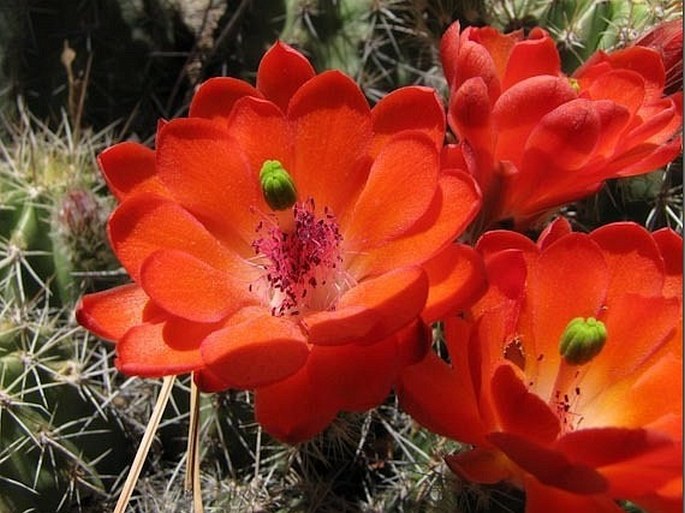
Distribution: US Southwest and north of Mexico, found from western Arizona to the edge of Colorado and in the south to Mexican states of Chihuahua, Coahuila and Sonora.
Ecology: Grows in the desert, in dry grasslands, rocky slopes, edges of mountain forests in elevations from 150 to 2700(–3000) m. Blooms from March to June. The flowers are pollenated by hummingbirds and stay open through the night.
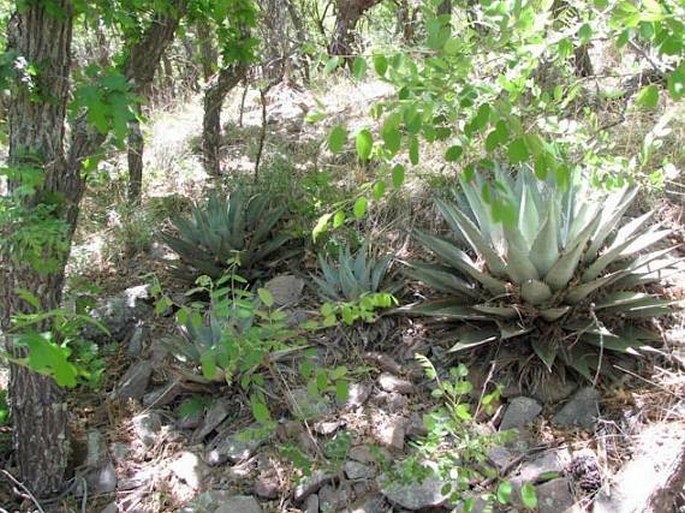
Description: Cactus of columnar habit, multi-branched, often in clumps to 100 cm across, sometimes dioecious, polyploid. Stem is straight, cylindrical, 5–40 × 4–15 cm, 5–14 ribbed, slightly wavy, areoles 10–20 mm distant with usually 5–16 spines, straight, grayish white, brown yellowish, reddish or black; lateral spines 5–40 mm long, central 10–80 mm long, in crosscut oval. Flowers single sex only, 30–80 × 30–70 mm, tube 15–40 mm long, petals bright red, sometimes orange red; inside stamens are longer than outside ones, anthers pink or purple ( rarely yellow). Fruit green or yellowish, 20–40 mm long.
Threat and protection: Listed as protected by international trade agreement CITES.
Note: This species is quite variable with main differences in density of spination and size of the stem. In its range there is a number of intraspecific taxa, which classification is complicated.
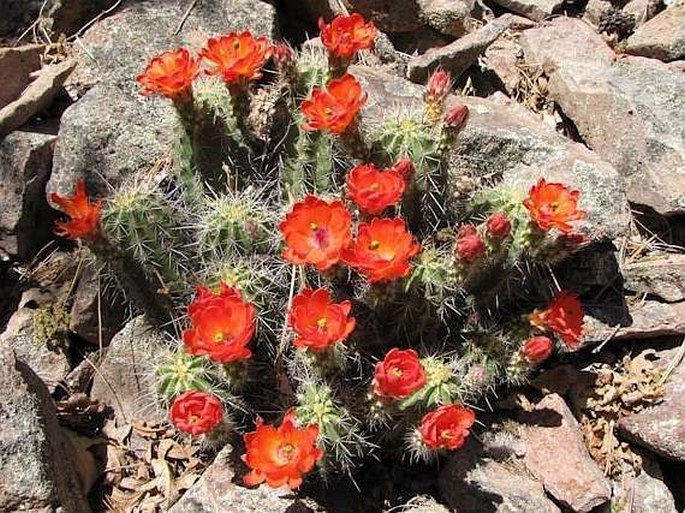

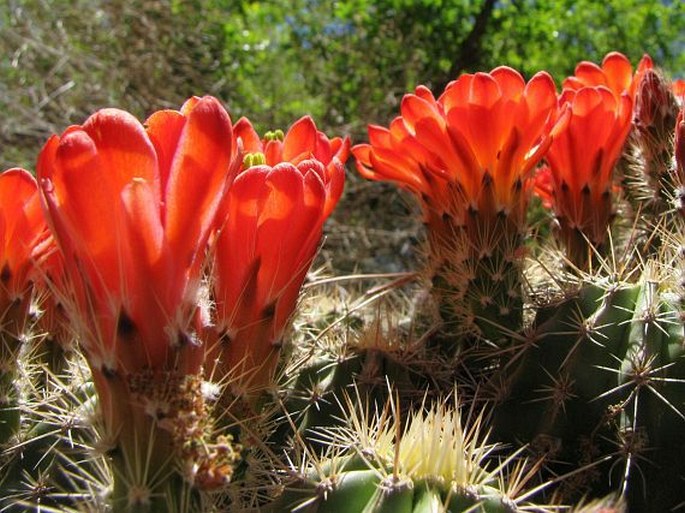
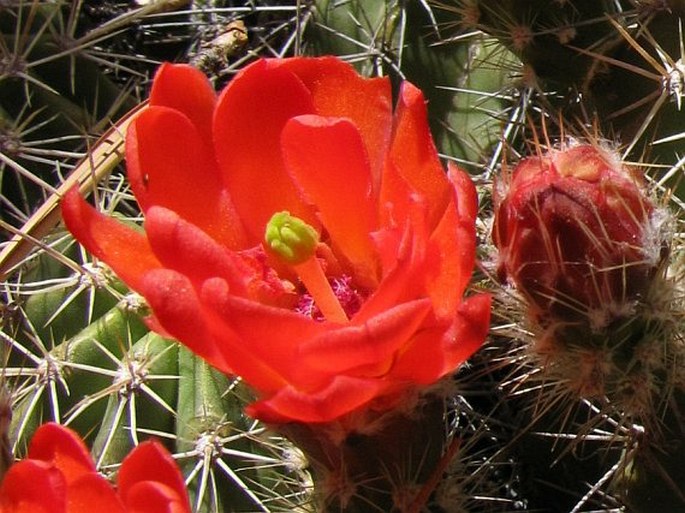
These images were taken in USA, Arizona, Chiricahua Mountains (May 2009).


